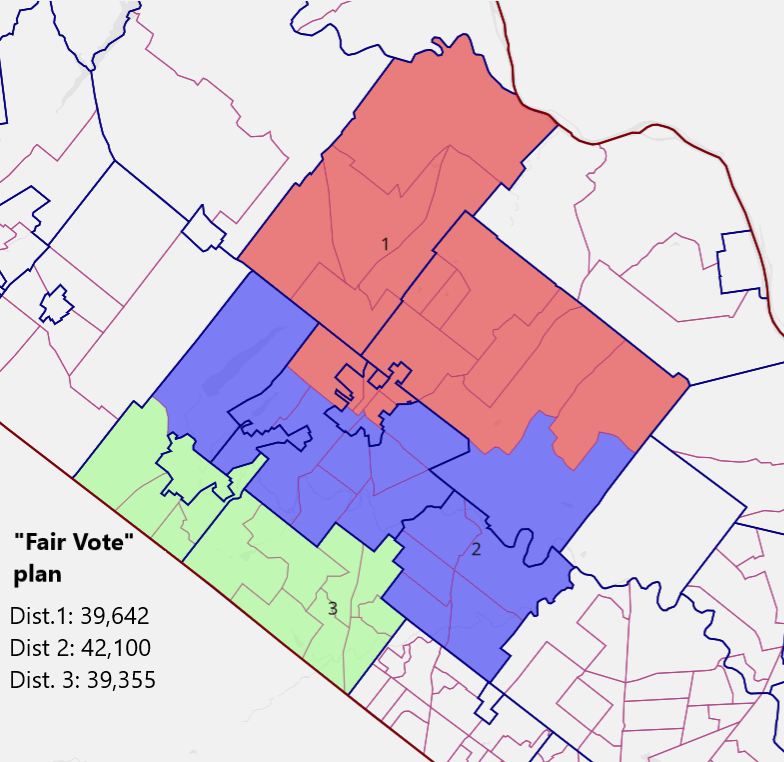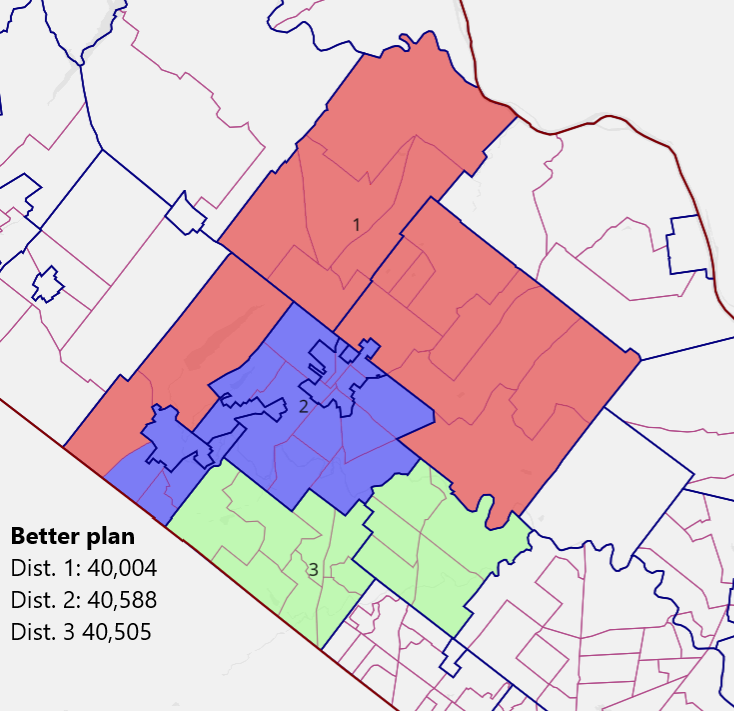Kyle Sammin: Central Bucks Dems try to make their electoral gains permanent through creative line-drawing
Democrats flipped control of the Central Bucks School Board this week after one of the most intense campaigns anyone had ever seen for the offices. Like it or not, that is democracy in action. The incumbent Republicans were, at times, the victims of incredibly slanted press coverage from the mainstream press, but the vote is what it is. The people have spoken.
But Bucks County Democrats have also made it clear that they don’t want the people to get the chance to change their minds.
In a lawsuit that has been in progress even as the electoral campaign was happening, Democratic activists sued the district over the new district maps drawn following the 2020 census. The new map made few changes to the nine districts that already existed, shifting only as far as was needed to maintain equal population among them.
That wasn’t enough, the “CBSD Fair Votes” organization said. They petitioned a judge to change not only the district lines but also the entire governmental structure, wishing to move from nine single-member districts to three three-member districts.
That’s a choice every school district in the state has, but Central Bucks has long maintained single-member districts, as have plenty of other districts of their size. It makes sense: as the third-largest district in the state, Central Bucks maintained manageable districts so that each area is ensured of representation. Smaller districts also make it easier for under-funded candidates to compete. Pittsburgh’s school district, the state’s second-largest, does the same. (Philadelphia is the largest district, but does not have an elected board.)
A judge in a different county found this choice to be impermissible.
“In maintaining subdivision integrity,” Judge Cheryl Austin wrote, “the Fair Votes Plan also keeps communities together and preserves communities of interest. An advantage of having fewer regions in the school district will mean that school district residents have an opportunity to vote for three of the nine school district directors instead of one. This will create a greater chance that residents will be electing board members that reflect their personal values. Additionally, a three-region system increases the voters’ ability to vote for at least one board member from every four years to every two years.”
There’s a lot to break down there. “Keeping communities together” is a common aim of good districting. It’s one that the state Supreme Court ignored repeatedly in the legislative redistricting of 2021, so the precedent isn’t great, but it’s still not a bad idea. But what matters more to the Fair Votes people is not how many municipalities are split, but which municipalities are split. Their map keeps more townships together, but splits the Borough of Doylestown in half, conveniently spreading its heavily Democratic electorate between two of the new megadistricts.
Splitting municipalities is a fact of life when the population isn’t divided perfectly evenly across precincts. Any plan was probably going to have to split at least one. The nine-seat plan adopted by the Board split six municipalities. The “Fair Vote” plan splits four. But it is also possible (see below) to make three equal-sized districts that only split one municipality. This isn’t hard: it took me ten minutes to figure it out. And as a bonus, the map I drew has districts that are closer to equal in population.


By the court’s own standards, this map is better. Why not use it? Because it does not further the Democrats’ aim of spreading their voters more evenly across the three megadistricts.
This is about politics, and nothing more. There are still appeals possible, though the new board might not wish to pursue them, as the map benefits their party. But the population disparities could doom this new system, even if the judicial overreach does not, as happened in a redistricting case in Upper Providence last month.
The court’s novel ruling that multimember districts are necessarily better also brings the entire school board law into question. Would not the same line of thinking require Pittsburgh and the other nine-district maps to be transformed? Indeed, the logic of that argument (if we may call it that) could go a step further — why not require every school district to elect all of its members at large? Then there would be no split municipalities!
But, of course, that is nonsensical. And so is this decision. The law gives districts options, none of which is favored over the others. Let’s call this gerrymander by its proper name, and stop pretending principle or law has anything to do with it.
Kyle Sammin is Broad + Liberty’s editor-at-large.




Kyle: You used too many words. What I gathered is: Now you see these strange, unpleasant, and formidable schemers. They are both “Republican” and “Democrat” – and they are the same and act in a similar way. They hate the poor in spirit, those who mourn, the meek, those who hunger and thirst for righteousness, the merciful, the few pure in heart, the peacemakers, and those who are persecuted because of righteousness. These schemers are the billionaire oligarchs, and their politicians that profit from your tax money, and the godless communists. We have an ocean of mad, uneducated people too. Learn how to create ammunition. Just a few thoughts.